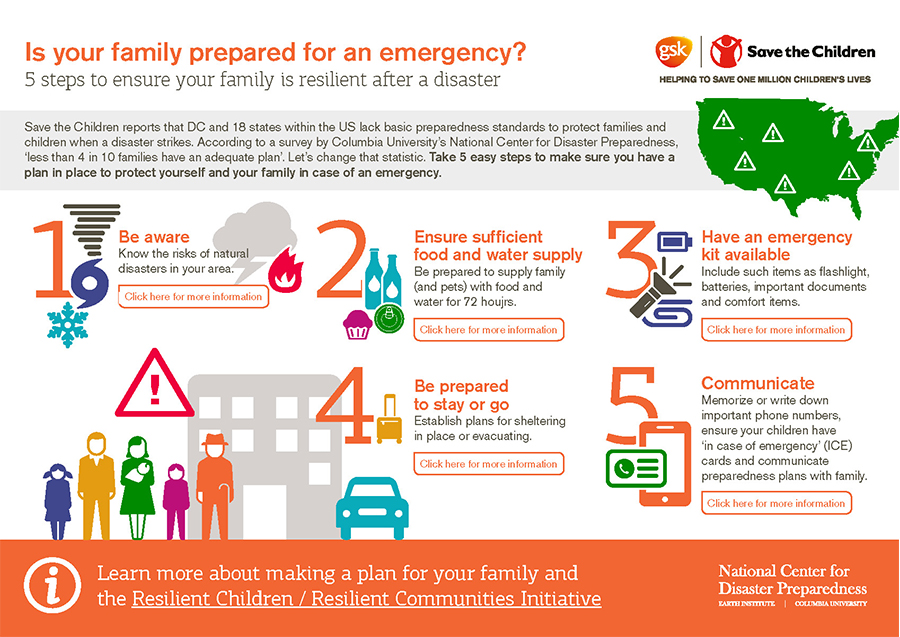Rachael Walker

Children's literacy consultant Rachael Walker and many of the authors, parents, and educators she’s met and worked with talk about how books have changed their lives, how to bring books to life for young readers, and how to enrich kids’ lives with good books. Find more posts from Rachael at her Reading Rockets blog, Book Life.
September 27, 2023
Did you know that September is National Preparedness Month?
Natural disasters can happen anywhere and at any time and are not easy for anyone to comprehend or accept. Making sure you and the kids in your life are prepared can make a big difference to everyone’s safety and peace of mind when there is an emergency.
For kids, start the preparation process with books! Reading together is a good way to open the conversation about natural disasters and what to do when disaster strikes. Books can help children contextualize and discuss difficult events. Sharing stories and facts gives kids a chance to ask questions and gives you an opportunity to get a better understanding of what they know and what they are concerned about.
Some of my favorite recent titles include:
Wombat Said Come In by Carmen Agra Deedy; Illustrated by Brian Lies. This is such a wonderful book for talking about helping others in a crisis as you read about Wombat generously offering refuge to a parade of Australian animals during a bushfire.

The Coquíes Still Sing / Los Coquíes Aún Cantan by Karina Nicole González; illustrated by Krystal Quiles. In this story of hope and community, as Elena and her family work to rebuild what a hurricane destroyed, Elena listens for the call of the tree frogs. Use this book to reflect together on the resilience and strength of Elena, her family, her community, and the environment.
The Longest Storm by Dan Yaccarino. A lovely metaphor for the many different storms we must weather in life, this reassuring title invites meaningful discussion about how people cope with crisis.
Disasters by the Numbers by Steve Jenkins. Having nonfiction to share or to pair is critical to answering kids’ questions. Filled with clear, accessible facts which are presented in a variety of engaging ways, this title can work to help both younger and older readers take in and process all kinds of information about disasters.
Some resources that can also help:
- Weather Wonders. A clear understanding of weather can help ease kids’ worries. Weather Wonders includes tons of weather-related reading recommendations and science activities as well as guidance to help kids form their own plan of action to educate others about severe weather and make a difference by getting their family, school, or community prepared.
- Weather Reading Adventure Pack. Sometime too much science can be overwhelming, especially if kids already have a hard time dealing with weather events. The Weather Reading Adventure Pack, available in English and Spanish, uses books and simple activities to launch conversations about preparing for everyday weather which can help you ease into discussion about being ready for severe weather and other disasters.
- Natural Disaster Resources for Schools. Given the many recent major natural disasters around the world, kids may have questions about what’s happening and worries about their safety or the safety of their family. In this resource from Colorín Colorado, you’ll find ideas for how to support families impacted by disaster as well as resources by disaster topic.

Preparing together for natural disasters that may happen where you live can help build kids’ sense of control and safety. This Five Steps to Preparedness coloring sheet from Listos California can help kids learn about simple steps they can take to help prepare for any disaster.
The most important step to take is to make a plan. Sometimes, families get separated in a disaster. If it isn’t possible to stay safe at home or school, families need a plan to be able to get in touch with each other and to reunite. Talk together to plan where you will meet and how everyone will get there. Having a plan in place will help give peace of mind to everyone.
Write the plan and contact information down together so that everyone is familiar with what to do and has their own copy. The American Red Cross has a template (in English and Spanish) that can help you develop your family disaster plan. Once you have your plan, regular rereading helps ensure that everyone in your family knows the plan and that kids have more confidence in what to do in an emergency.
Resources
- Ready Kids (FEMA)
- Do the Prep Steps from Save the Children
- Family Readiness Kit from the American Academy of Pediatrics



